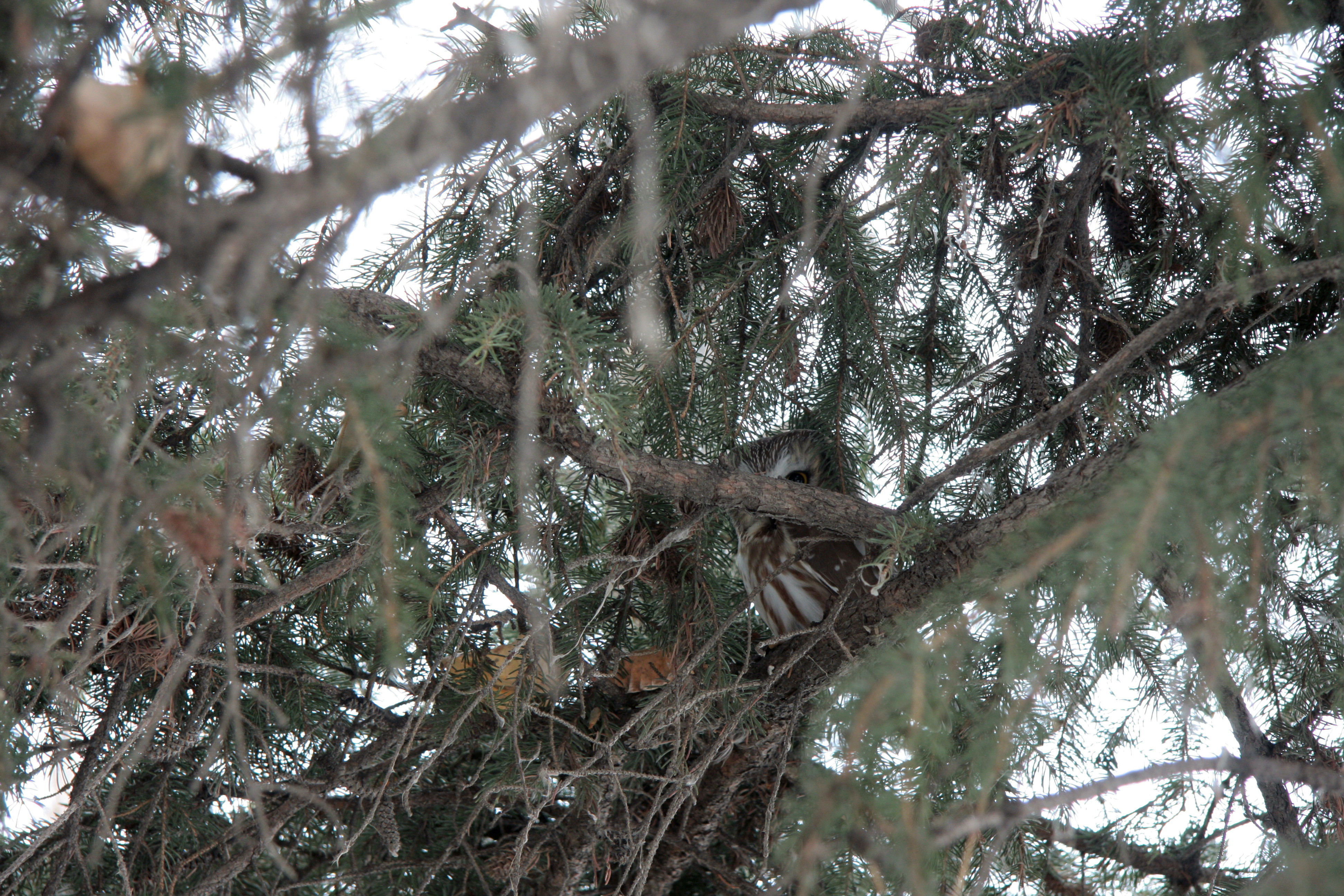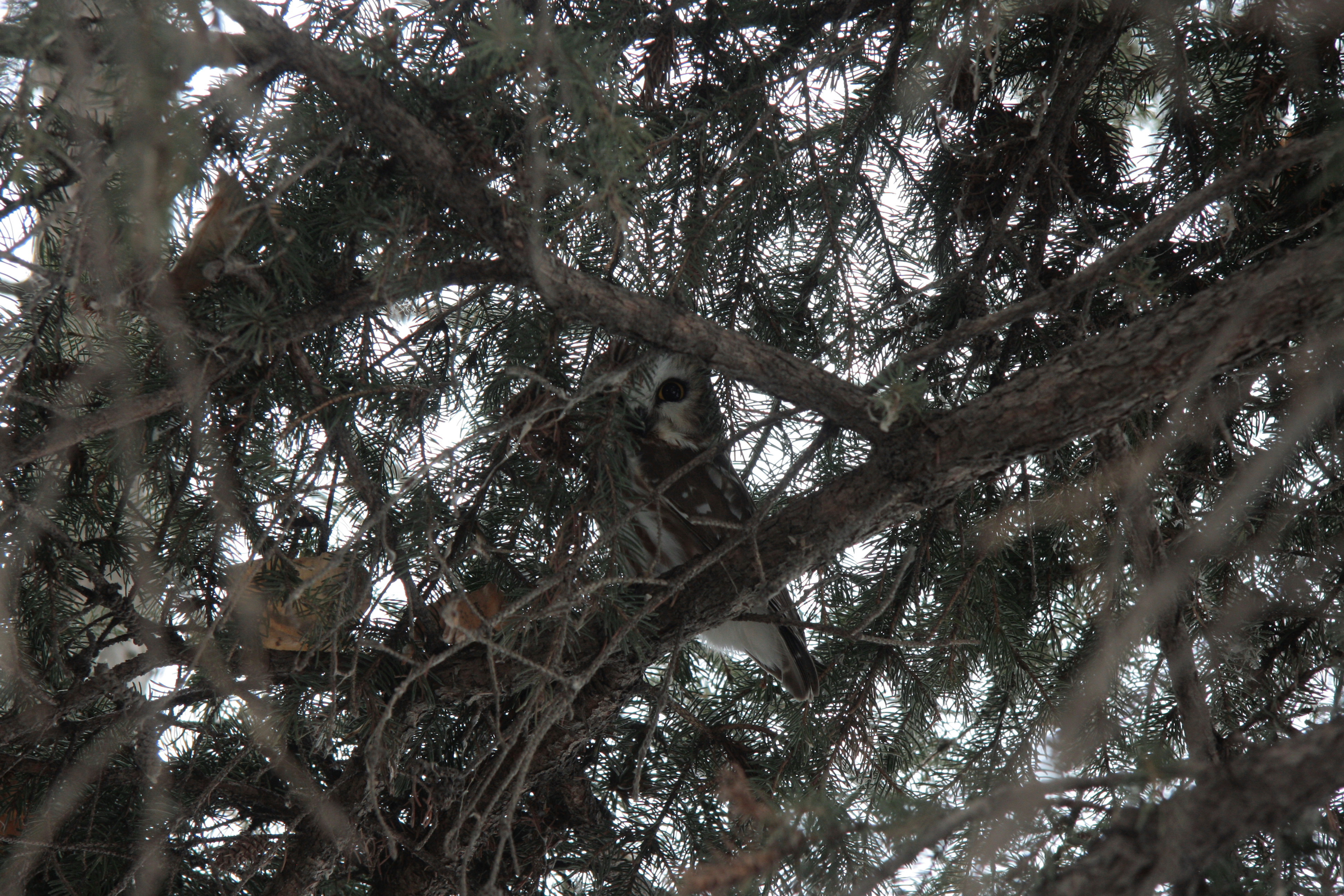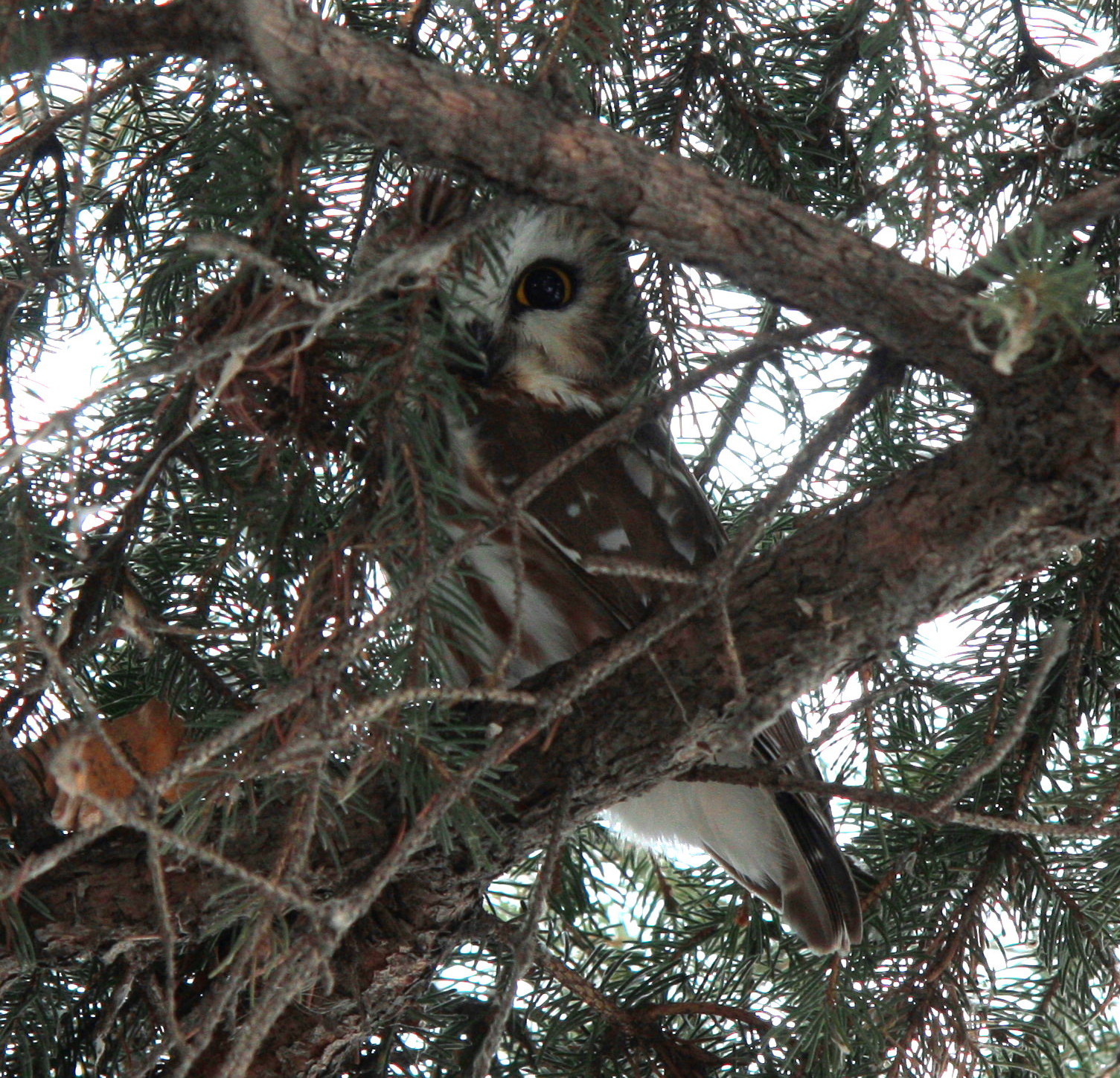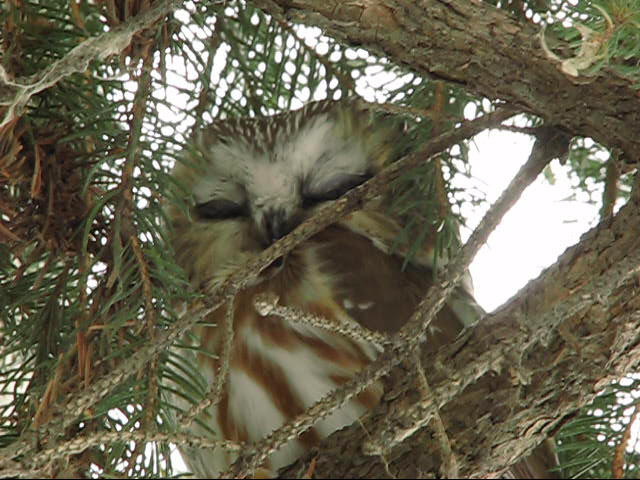For the past two weeks I’ve had two Eurasian Collared-Doves, likely a breeding pair, coming to my yard every day. They feed on the lawn (lately, on the snow), eating sunflower seeds that have spilled from the bird feeders.
Eurasian Collared-Doves
Eurasian Collared-Doves are not yet a common backyard bird in Calgary, but that may change. They were introduced to North America in the Bahamas in the 1970’s and have rapidly spread across the continent. I think they were first reported in Alberta in 2003, and in Calgary in 2004. I know of two pairs that have nested in the SE quadrant of the city in each of the past two years: one pair in Shepard, and another in Dover.
 This bird has an odd broken feather sticking out on its left side, so I know it’s the same bird returning each day.
This bird has an odd broken feather sticking out on its left side, so I know it’s the same bird returning each day.
Eurasian Collared-Doves are pale buff-grey to pinkish-grey in colour. They are about the same length as a Rock Pigeon, but slimmer and with a longer tail. On the back of their neck they have a narrow black half-ring, edged with white, from which they get their name.
This preening bird shows off its black collar…
Eurasian Collared-Doves are becoming more common in the rural areas south and east of Calgary, and are being seen regularly in the city as well. They seem to occupy an ecological niche between that of the Rock Pigeon and Mourning Dove. It remains to be seen if they will become a common backyard bird like the Rock Pigeon, or primarily a rural one like the Mourning Dove. If you see any in your yard, please let Birds Calgary know!
Posted by Bob Lefebvre










































